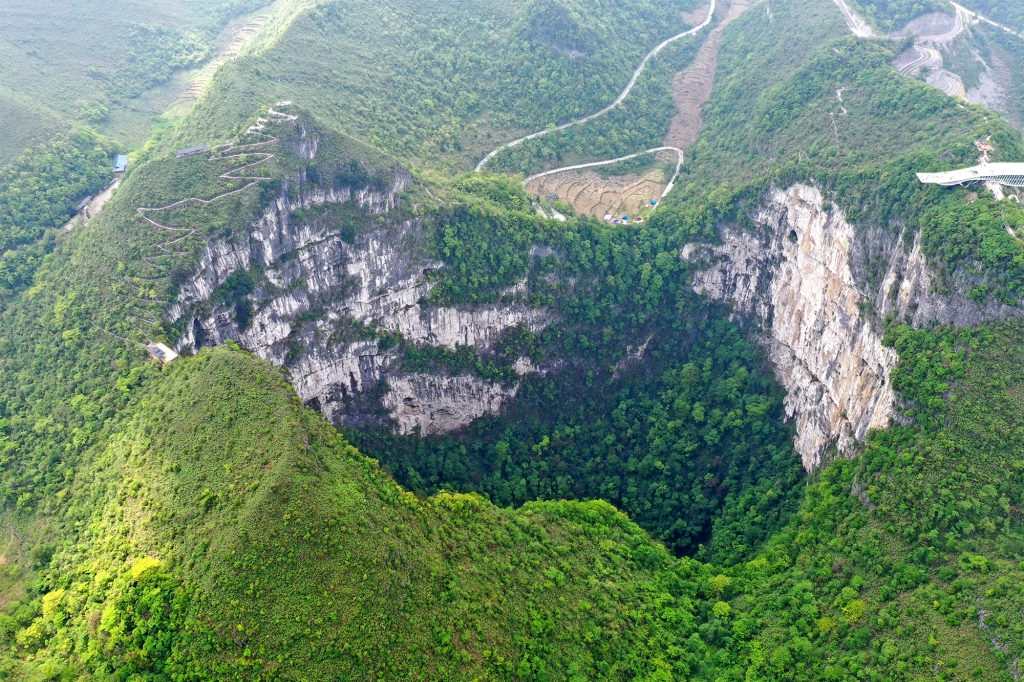630-foot sinkhole in China reveals massive ancient forest world
Hole-y moly, it’s the mother of all sinkholes.
Chinese spelunkers were astonished after discovering a massive 630-foot sinkhole that harbored a forest at the bottom — and possibly other life-forms — like something out of “The Lost World.” The pit is one of 30 known sinkholes located in Leye County, South China’s Guangxi Zhuang Autonomous Region, Xinhua News Agency reported.
“I wouldn’t be surprised to know that there are species found in these caves that have never been reported or described by science until now,” Chen Lixin, who led the Guangxi 702 cave expedition team that discovered the chasm, told Live Science.
The team discovered the capacious crater Friday, descending 328 feet and then hiking several hours to reach the base of the capacious crater a la “Journey To the Center of the Earth.” They then returned safely to the surface that same evening.
According to Zhang Yuanhai, a senior engineer with the Institute of Karst Geology of China Geological Survey, the “large” sinkhole measured over 1,000 feet long, 492 feet wide and 629 feet deep. Meanwhile, the volume exceeded 176,573,333 feet.
If that wasn’t awe-inspiring enough, the sinkhole harbored three interior caves, reportedly formed by erosion when it first surfaced.
Perhaps the most impressive feature was a “well-preserved primitive forest” at the pit’s base, which was home to prehistoric-seeming trees measuring over 130 feet tall, according to Lixin. The dense undergrowth, meanwhile, came up to the explorers’ shoulders.
And trees might not be the only things living in the abyss. George Veni, executive director of the National Cave & Karst Research Institute in the US, who wasn’t affiliated with the expedition, said such sinkholes can provide a veritable oasis for life.
Giant sinkholes, also known as dolines or giant pits, are reportedly caused by multiple cave-ins in karst regions — areas where bedrock is susceptible to dissolution by groundwater. They are primarily found in China, Mexico and Papua New Guinea, Xinhua reported.
“Because of local differences in geology, climate and other factors, the way karst appears at the surface can be dramatically different,” said Veni. “So in China, you have this incredibly visually spectacular karst with enormous sinkholes and giant cave entrances and so forth.”

He added, “In other parts of the world, you walk out on the karst and you really don’t notice anything. Sinkholes might be quite subdued, only a meter or two in diameter.”
In another cavernous catastrophe in February, a Turkish man was swallowed by a nearly 20-foot-deep sinkhole — and then hit with a falling vending machine — while lighting up outside.
Read the full article Here


